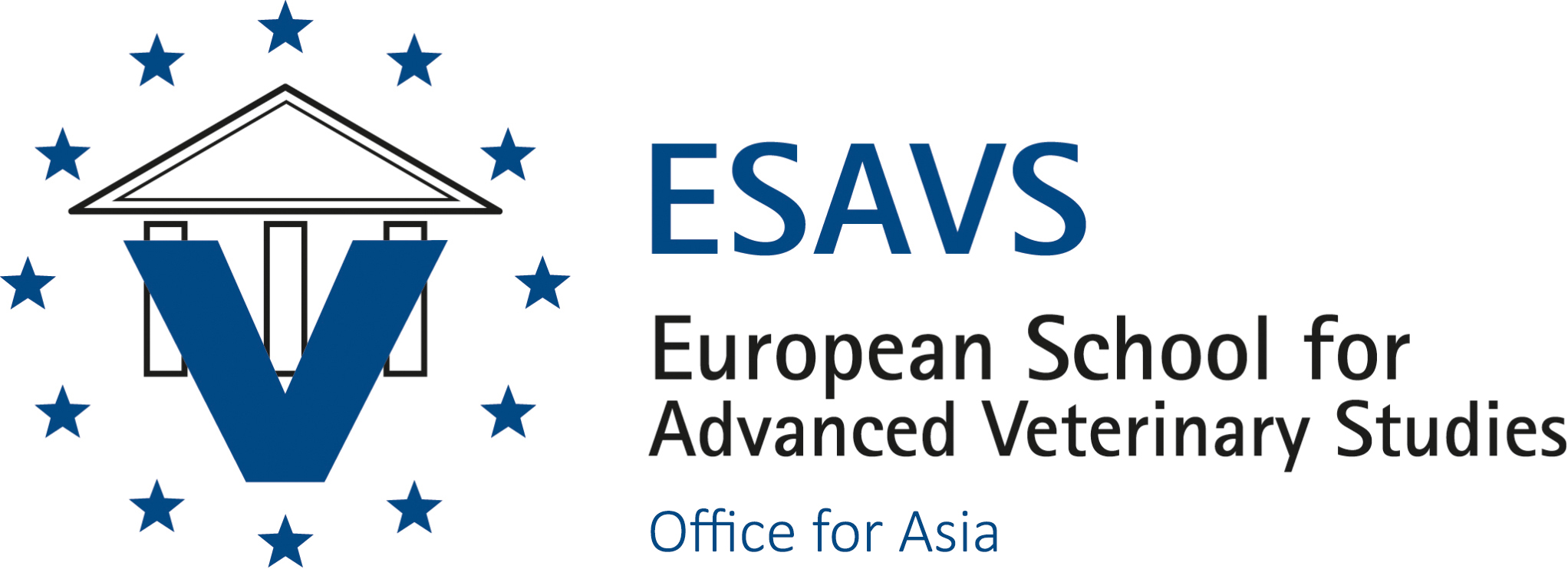Anaesthesiology 1:
Principles of Small Animal Anesthesia & Loco-Regional Anesthesia & Analgesia
Fall 2025 | Shanghai, China
General Overview
General Overview
The 2025 Basic Anaesthesia (Anaesthesia I) course program targets veterinarians with foundation knowledge in clinical anaesthesia who in the future wish to focus on anaesthesia, perioperative patient care, and pain management in small animal practice. The first 4 days of the program provides participants with a comprehensive understanding of the principles and the state of the art techniques of small animal anaesthesia and perioperative analgesia including routine perioperative vital organ function monitoring and pain management. The second part of the program focuses on loco-regional anaesthesia and analgesia as an adjunct to general anaesthesia and perioperative pain management. Wet labs and workshops will help participants familiarize themselves with common techniques of loco-regional anaesthesia and analgesia in dogs and cats and the use of ultrasound guidance to perform nerve blocks.
Topics:
- Preanesthetic animal evaluation, physical status and anaesthetic risk assessment
- Physiological and pharmacological basis of anaesthesia and perioperative analgesia
- Basic principles of contemporary anaesthesia in small animals
- Methods of intraoperative anaesthetic depth, vital function and nociception monitoring
- Basic perioperative management of cardio-respiratory dysfunction and arrhythmias
- Techniques of loco-regional anaesthesia and analgesia
Workshops:
Loco-regional anesthesia and analgesia wet labs
Reading List
- Pharmacology of premedication agents
- Pharmacology of injectable anesthetics
- Pharmacology of inhalant anesthetics (isoflurane and sevoflurane)
- Physiology of the cardiovascular system
- Drugs used in perioperative management of cardiopulmonary dysfunction and cardiac arrhythmias
- Physiology of the respiratory system
- Physiology of the nervous system
- Pharmacology of drugs used in loco-regional anesthesia & analgesia techniques in small animals
Content of the Course
- General philosophy and approach to individualized small animal anesthesia
- Review of cardiovascular, respiratory and neurophysiology as it relates to anesthesia
- About the drugs we use: premedications
- About the drugs we use: induction and maintenance agents
- About the drugs we use: local anesthetics
- Intraoperative monitoring and problem solving, and troubleshooting (complete with flowcharts for common intraoperative issues)
- Recovery from anesthesia
- Techniques of loco-regional anesthesia and analgesia (wet labs on animal cadavers)
Language
All modules will be held in English with consecutive translation into Chinese.
Day 1
08:00 - 08:30 Registration and handing out of course books
08:30 - 09:00 Welcome and introduction into the course (structure and goals of the course)
09:00 - 10:30 Preanesthetic animal evaluation, physical status and risk assessment; animal preparation
10:30 - 12:00 Clinical pharmacology of most common premedication drugs used in small animal anesthesia
12:00 - 13:00 Purpose of premedication and illustration of selection criteria for premedication drugs using clinical case scenarios
13:00 - 14:00 Lunch Break
14:00 - 15:30 Purpose of premedication and illustration of selection criteria for premedication drugs using clinical case scenarios
15:30 - 16:00 Question and Answer Session with course participants
16:00 - 18:00 Clinical pharmacology of injectable anesthetics (propofol, alfaxalone, etomidate)
Day 2
08:30 - 10:00 Clinical pharmacology of inhalant anesthetics (isoflurane, sevoflurane, N2O) using clinical cases
10:00 - 11:00 Illustration of selection criteria for anesthetic drugs using clinical case scenarios
11:00 - 12:00 Illustration of selection criteria for anesthetic drugs using clinical case scenarios
12:00 - 13:00 Question and Answer Session with course participants
13:00 - 14:00 Lunch Break
14:00 - 15:30 Signs of anesthesia, assessment of anesthetic depth and record keeping using anesthesia records
15:30 - 17:30 Review of basic cardiovascular physiology & common cardiovascular monitoring techniques
17:30 - 18:00 Question and Answer Session with course participants
Day 3
08:30 - 10:00 Causes and recognition of hemodynamic impairments during anesthesia
10:00 - 11:30 Principles of ECG recording and cardiac rhythm diagnosing - Part I
11:30 - 13:00 Principles of ECG recording and cardiac rhythm diagnosing - Part II
13:00 - 14:00 Lunch Break
14:00 - 15:30 Managing hemodynamic impairments
15:30 - 16:30 Managing hemodynamic impairments: Case discussion
16:30 - 18:00 Review of basic respiratory physiology and simple respiratory function monitoring techniques
Day 4
08:30 - 09:15 Respiratory function monitoring using capnometry/-graphy and pulse oximetry
09:15 - 10:30 Basics of arterial blood gas analysis in respiratory function monitoring
10:30 - 12:00 Indications for and impact of mechanical ventilation in the anesthetized animal
12:00 - 13:00 Demonstration of types of mechanical ventilators, modes of mechanical ventilation, and ventilator settings
13:00 - 14:00 Lunch Break
14:00 - 15:30 Animal support during emergence from injectable and inhalant anesthesia
15:30 - 17:00 Management of frequent anesthetic complications
17:00 - 18:00 Question and Answer Session with course participants
Day 5
08:00 - 08:30 Introduction & Learning Objectives
08:30 - 09:00 Equipment (Needles, catheters, pumps)
09:00 - 11:00 Equipment (Nerve stimulators, Ultrasound)
11:00 - 12:00 Safety and Complications associated with LRAA
12:00 - 13:00 Wet lab: Familiarizing with ultrasound scanners and probes
13:00 - 14:00 Lunch Break
14:00 - 14:45 Techniques of local anesthetic infiltrations and intra-articular blocks
14:45 - 15:30 Techniques of locoregional anesthesia in the thoracic and abdominal walls
15:30 - 16:15 Wound infiltrations and intra-articular analgesia (coxofemoral joint, stifle, shoulder, elbow)
16:15 - 18.00 Thoracic and abdominal wall blocks (intercostal nerve block, transversus abdominis plane (TAP) block)
Day 6
08:00 - 10:00 Techniques of spinal-/epidural anesthesia and analgesia
10:00 - 11:30 Wet lab: Techniques of spinal-/epidural anesthesia and analgesia (lumbosacral approach)
11:30 - 13:00 Wet lab: Techniques of spinal-/epidural anesthesia and analgesia (epidural catheter placement & alternative approaches)
13:00 - 14:00 Lunch Break
14:00 - 15:30 Techniques of dental blocks
15:30 - 18:00 Wet lab: Dental blocks
Day 7
08:00 - 09:30 Techniques of loco-regional anesthesia and analgesia in the pelvic limb (Ultrasound- and electrolocation-guided approaches)
09:30 - 11:30 Wet lab: Ultrasound-guided technique of sciatic and femoral nerve blocks
11:30 - 13:00 Wet lab: Ultrasound-guided technique of lumbar plexus nerve blocks
13:00 - 14:00 Lunch Break
14:00 - 15:30 Techniques of loco-regional anesthesia and analgesia in the thoracic limb (Ultrasound- and electrolocation-guided approaches)
15:30 - 16:30 Wet lab: Ultrasound-guided techniques of brachial plexus block
16:30 - 18:00 Wet lab: Ultrasound-guided techniqueof RUMM (Radial, Ulnar, Median & Musculocutaneus) nerve blocks
Principle Course Master:
Instructors:
Course Location
Small Animal Hospital Chulalongkorn University, 254 Phayathai Road, Pathumwan, Bangkok 10330, Thailand
Registration and Fees
Discount tuition fee for Thailand, Indonesia, Philippines, Malaysia, India, Sri Lanka, China, Pakistan, Lebanon and Vietnam: EURO 1.450,–
Early registration: Euro 1.350,--
(Deadline for FULL early registration payment: 13 June 2022)
Discount tuition fee for Macao, South Korea and Taiwan: EURO 1.850,–
Early registration: Euro 1.750,-
(Deadline for FULL early registration payment: 13 June 2022)
Tuition fee for Europe, Singapore, Hong Kong, Australia, New Zealand, United Arab Emirates, Canada, USA and Japan: EURO 2.250,–
Early registration: Euro 2.150,-
(Deadline for FULL early registration payment: 13 June 2022)
For payment via Bank Transfer or Paypal please contact the ESAVS Office for Asia: This email address is being protected from spambots. You need JavaScript enabled to view it.
By signing in to the Interest List, you will be notified via E-Mail as soon as registration for this course opens.
If you have any questions regarding the registration or any other further details for the courses in Asia please contact the ESAVS Office for Asia: This email address is being protected from spambots. You need JavaScript enabled to view it.






